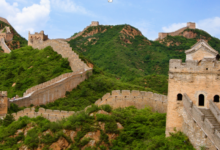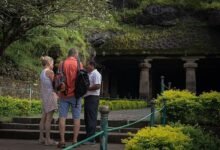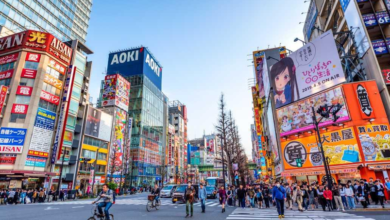How to Prepare for the 14 Day Everest Base Camp Trek

The Everest Base Camp Trek (EBC) is one of the great treks of the world, taking you right into the heart of the Himalayas with incredible viewpoints, cultural experiences, and many more specific highlights during the trek. Your EBC trek will take between 12 and 14 days, and will see you pack your gear to over five thousand meters while testing your endurance and hopefully your determination.
Preparation is very important when completing the Everest base camp trek, as it is not like many other expeditions, as you will encounter tough terrain, variable weather, and altitude. If you are not physically fit, do not have the correct gear, and do not acclimate, you may suffer. The good thing is that training hikes, cardiovascular sessions, and researching altitude sickness can greatly enhance your chances once you start the trek.
For many people, the EBC trek is about pushing personal limits, wanting to get close to the largest mountain on earth, or simply to say they have been to the base camp of Everest. So with this in mind, if you do take the time to plan and commit to the trek, then you will have a wonderful, memorable, and safe experience.
Physical Preparation
Having good physical shape is important for the Everest Base Camp trek because you have to walk for long hours in high altitudes and low oxygen levels. Cardiovascular endurance is also equally important.
You can build cardiovascular endurance by exercising, like running, cycling, and swimming. As your muscles have to deal with challenging trekking, do strength training that focuses on your legs, core, and upper body.
You can also do a mimic hike while carrying a load on a backpack to get used to high altitude trekking while carrying a backpack. Training hikes must be 4 to 6 hours long and should include gradual elevation gain and exposure to terrain.
Acclimatization is important throughout the journey to prevent altitude sickness. Ascending slowly, planning rest days, staying hydrated, and taking care to avoid alcohol are some strategies that will help you to avoid altitude sickness. Also, recognize the common symptoms of altitude sickness. Training your body to hike longer and conditioning your mind can help you adapt to thinner air better.
Essential Gear and Packing List
Clothing:
Pack layer clothing. Pack a waterproof jacket for rain and winds, thermal wear for warmth in chill temperatures, and good, durable trekking pants for long days of hiking.
Footwear:
Check your trekking boots before starting the trip to ensure they fit you well and are comfortable. Bring multiple pairs of trekking socks for cold weather, and bring gaiters to prevent mud, debris, and snow from entering your boots.
Accessories:
Important items to consider are trekking poles for stability, gloves to keep your hands warm, a hat for sun and cold protection, UV protective sunglasses, and a headlamp for visibility, the last few hours of the day or nighttime.
Gear:
Take a sturdy backpack and pack the essentials for each day: a cold-weather sleeping bag, water purification gear to drink safely, and a duffel for porters to carry your bulk gear.
Items to think about that are optional, but can be helpful: Bring a bank for power to keep your electronic devices charged, and a quick dry towel to use to keep things convenient and in your control. These items just increase your comfort and convenience without adding to your overall weight.
Permits and Logistics
To trek in this region, you need a Sagarmatha National Park Entry Permit and the Khumbu Pasang Lhamu Rural Municipality Permit. You need to obtain these permits either in Kathmandu or at checkpoints along the trail.
For knowledge of locals, permits, and safe trail navigation, having a guide is beneficial. Solo trekking is also possible with good planning, navigation skills, and permits. But the decision completely depends on your comfort and experience.
The Khumbu region is in its full allure from March to May and Late September to November. The weather is clear for trekking to Everest because of bright skies and safer conditions. Monsoon is an obvious early warning for too much rain, and winter is similarly troubled with harsh cold or avalanches.
Transport to Lukla by flight is often delayed or canceled due to weather-related issues. Having alternative plans may require staying in Kathmandu longer than originally planned, using flexible one-way tickets, or taking road or helicopter transport to get to your trek. Patience and flexibility will help during these unpredictable delays in the travel timetable.
Health and Safety Tips
Altitude sickness occurs so regularly above 3,000 meters elevation that it is treated as a standard response when a patient presents with headaches, nausea, dizziness, or breathlessness. There are a number of steps to avoid altitude sickness.
Firstly, take it slow and do not rush, followed by drinking plenty of water, avoiding alcohol, and resting. Acclimatization stops are Nanch Bazaar, Dingboche, etc. Drugs like Diamox can assist with altitude sickness; however, they require a prescription from a medical professional. If your condition worsens, to treat altitude sickness, you should start an immediate descent.
Dehydration makes altitude sickness worse, so hydration is important. Eat enough nutritious and balanced foods to have proper energy. Caffeine and alcohol can dehydrate your body, so avoid such foods.
You should pack a first-aid kit in your gear list, including painkillers, a blister kit, and altitude sickness medication. Also, bring your prescribed medicine from the doctor, antiseptic, bandages, thermometer, etc.
You must obtain travel insurance, which should cover emergency evacuation from high-altitude trekking, including helicopter evacuation and medical treatment for altitude sickness. Please read the details of the policy carefully to ensure that you’re covered for the challenging terrain, potential flight delays, and the difficulty of getting back to Kathmandu from Everest Base Camp, or any other trek for that matter.
Mental Preparation
Be ready for stunning views and rugged conditions with proper mental preparation. The weather can change suddenly, and you may have to get by while embracing simplicity. Weather, discomfort, and change keep things in perspective and could even add to your sense of accomplishment.
Two aspects of the trek that can be demanding physically are the long days of trekking and the basic living conditions of the teahouses. Allowing yourself to accept some of the limited comforts available is an essential aspect of working through disappointment. Acknowledging small successes daily, along with your bubbling relationship with other trekkers, will provide part of the support you will need.
During the hard patches of the trek, motivate yourself by setting short-term goals, taking joy in progress, and reminding yourself of the intention you had to venture with the group. Maintain a positive attitude, enjoy the journey, and visualize the destination; this will help in pushing through some tougher moments.
Budgeting for the Trek
For 14 14-day trek, you can expect to pay a total of around $1,800 to $2,000. Here is the cost breakdown:
Permits ($50 to $60)
Flight ($430 round trip)
Guides ($30 to $40 per day) and porters ($20 to $25 per day)
Accommodations ($35 to $40 per day)
Tipping is an important part of the culture of Trekking in Nepal. To get discounts on flights, book flights in advance. Patience and flexibility will help when dealing with unexpected costs.
Cultural Etiquette and Responsible Trekking
Dressing modestly, greeting with “Namaste,” and asking permission before taking photos will make your journey enjoyable. Additionally, do not disrespect the sacred rituals and traditions of the Sherpas.
Focus on sustainable and environmentally friendly trekking by bringing reusable bottles, following the leave no trace principle, and packing without waste. Try to book an eco-friendly lodge to reduce the impacts on the fragile mountain ecosystem.
Be mindful of supporting local businesses by staying with family-run teahouses and purchasing handicrafts from one of our communities. Festivals are respectful engagement with communities, while maintaining customs, culture, and sustainable community support.
Read Also: how long does it take to get your real estate license
Conclusion
The Everest Base Camp trek will challenge your body and spirit and give you stunning views and greater memories. Have faith in your work and take pleasure in each second of the journey that changes your life.
The effort, soreness, and persistence to reach the famous Everest region are worth the payoff. You are developing resilience and a valuable connection to nature and culture, and that is a bucket-list experience that is priceless.
Please feel free to share your own trekking experiences or ask a question. Sharing experiences with fellow adventurers adds value to the journey and can help others prepare for their journey to the top of the world.
Source: https://www.exploreinnepal.com/everest-base-camp-trek-14-days/







